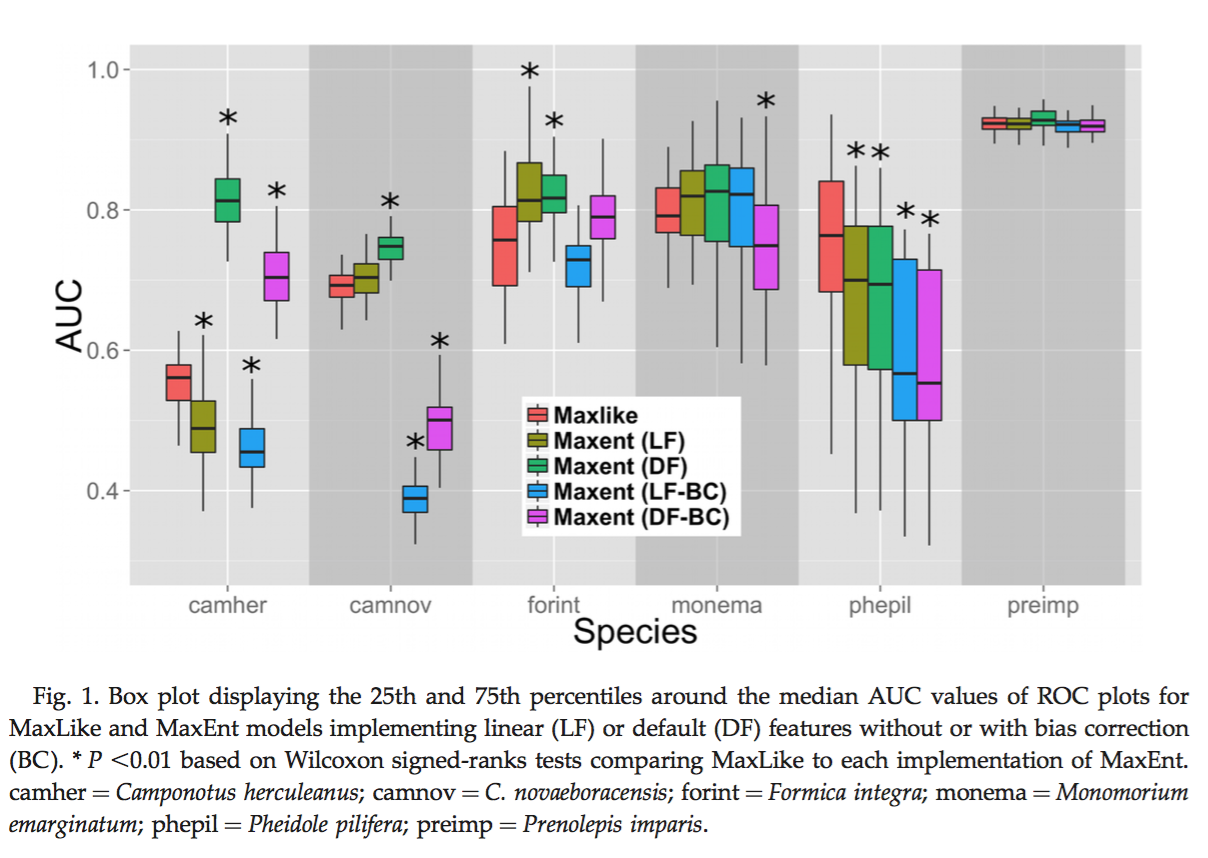 Fitzpatrick, M. C., N. J. Gotelli, and A. M. Ellison. 2013. MaxEnt versus MaxLike: empirical comparisons with ant species distributions. Ecosphere 4(5):55. http://dx.doi.org/10.1890/ES13-00066.1
Fitzpatrick, M. C., N. J. Gotelli, and A. M. Ellison. 2013. MaxEnt versus MaxLike: empirical comparisons with ant species distributions. Ecosphere 4(5):55. http://dx.doi.org/10.1890/ES13-00066.1
MaxEnt is one of the most widely used tools for species distribution modeling using presence-background data. Despite its popularity, the exponential model implemented by MaxEnt does not directly estimate occurrence probability but an index of relative habitat suitability. Royle et al suggested the logistic output of MaxEnt may differ substantially from underlying occurrence probabilities. MaxLike is a relatively new maximum-likelihood estimators for the probability of occurrence using presence-only data. Fitzpatrick et al compared the performance and relative merites of MaxEnt and MaxLike using occurrence records for six species of ants in New England. They evaluated model outputs in terms of their statistical fit to the traning data (AIC), their spatial predictions of occurrence relative to testing data (minimum predicted area and AUC), and their professional judgment. Though MaxEnt accounts for sampling bias and include greater model complexity, their results showed that MaxLike exceeds MaxEnt with relatively few occurrence data and limited spatial range coverage. They therefore suggested using MaxLike as alternative to the wildly-used MaxEnt framework. I think it is necessary to remain critical towards wildly-used modeling methods and think about alternatives. It would be interesting to test these two methods based on species other than ants. Since MaxLike is a relative new method, the robustness of it remains to be tested by more implications, while MaxEnt has already been used in a variety of species.
Skip to content
ECOL 8910: Perspectives in Computational Ecology
Spring 2016: Species Distribution Modeling
